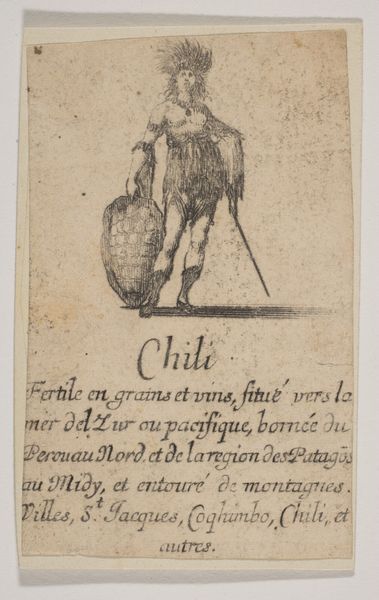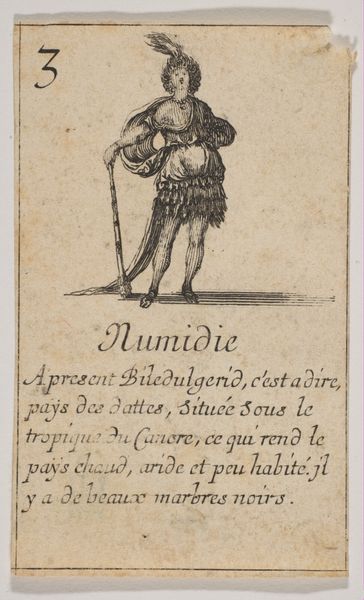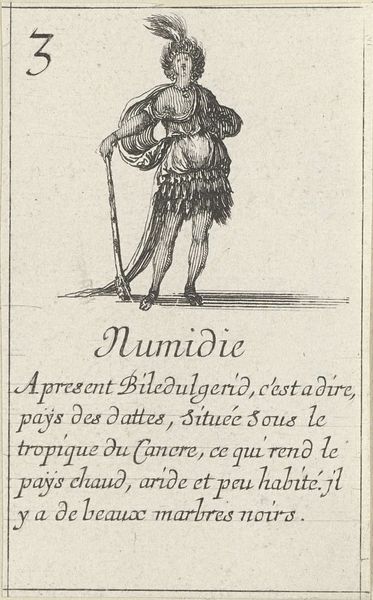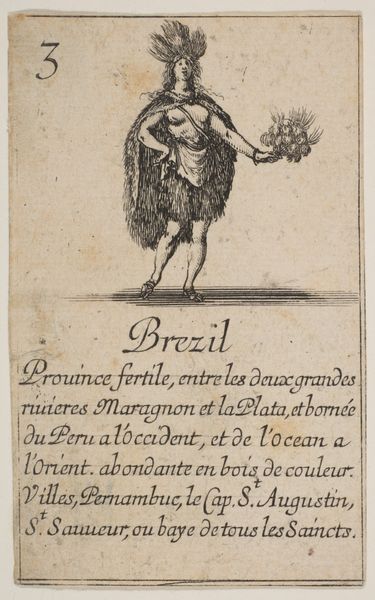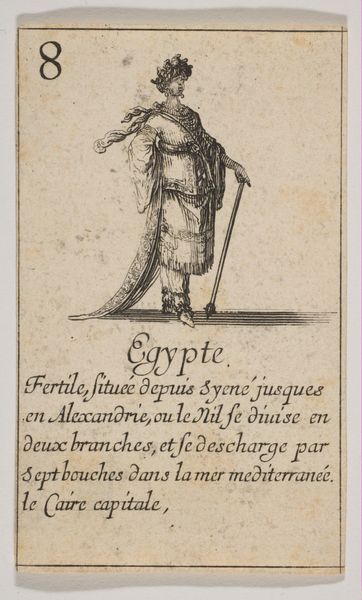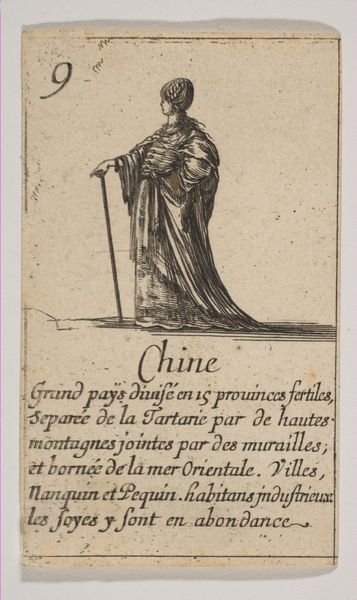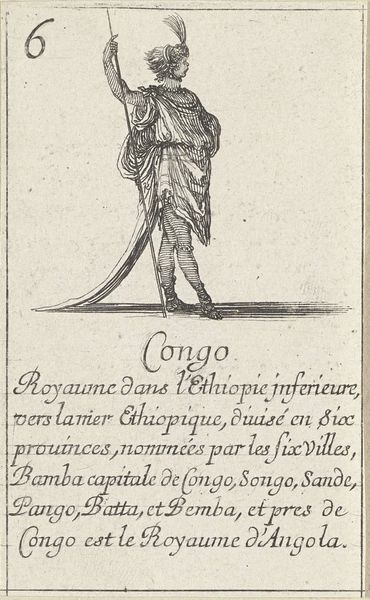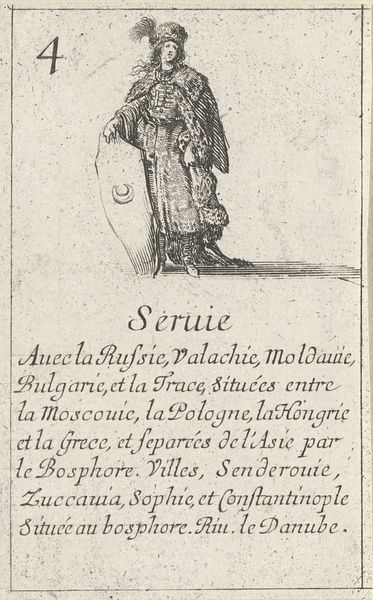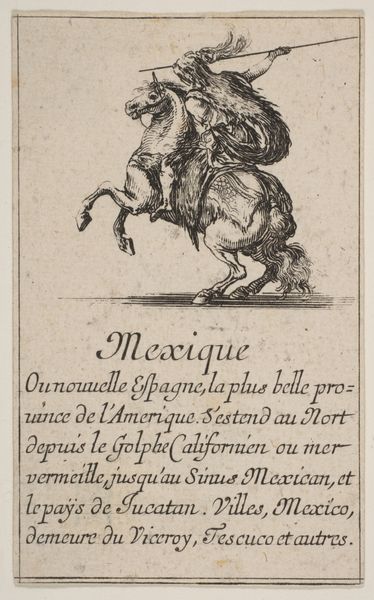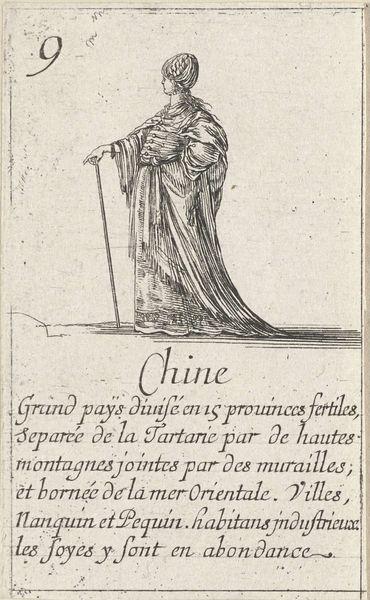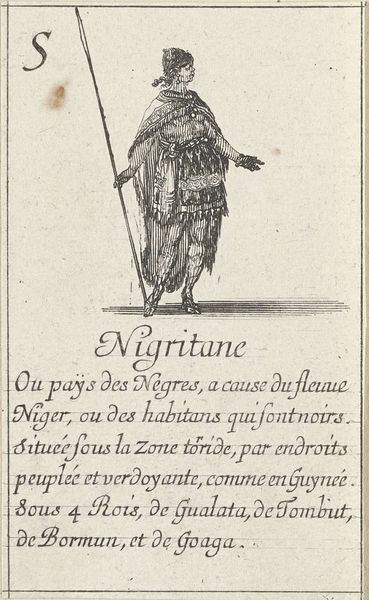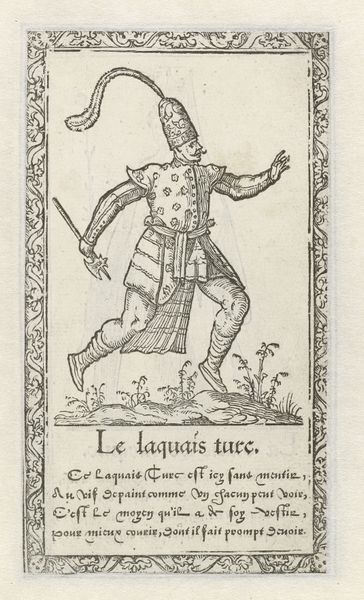
Chile, from the playing cards "Jeu de la Géographie" 1644
0:00
0:00
print, paper, engraving
# print
#
figuration
#
paper
#
engraving
Dimensions: Sheet: 3 1/2 × 2 1/8 in. (8.9 × 5.4 cm)
Copyright: Public Domain
Curator: What strikes you first about this piece? It's "Chile, from the playing cards 'Jeu de la Géographie'," an engraving dating back to 1644, crafted by Stefano della Bella. Editor: Immediately, there's a primitive quality, perhaps born from the engraving itself, but there's something stark and simple about the figure. I sense a raw honesty here. Curator: The starkness you mention stems from its function as a playing card—miniature yet symbolic. Let’s focus on its structural elements: the subject at the top is dominant over the place description, and how the single, posed figure directs your attention from top to bottom. Note how the lines create texture, giving a sense of depth within this limited space. Editor: Right, and knowing this piece originated in 1644 during a surge of geographic interest informs its symbolism considerably. That indigenous man stands as an emblem. We can also observe through his Western gaze, even unintentionally, the power dynamics embedded in representing a distant "other." Curator: Precisely. Notice the headdress, necklace, skirt and implement he carries. Della Bella's line work highlights how these elements become markers. Also the scale, the details of which can only be perceived on the miniature stage provided here. How does that detail translate into political discourse for you? Editor: A bit clumsily, if I am honest. The engraving presents Chile through an imperialistic filter, simplifying both the land and its people to digestible European consumption. Consider the text included, emphasizing fertile land; the artist certainly captures and condenses more than mere visual data. Curator: Absolutely, this reflects an impulse to classify and possess through knowledge. The artist’s hand simplifies a culture, presenting a potent mix of fascination and colonial agenda. Editor: These miniature windows can be very revealing. It shows so much about both the place, but mainly who gets to look and label. A good reminder about historical vision. Curator: Indeed. By recognizing formal elements and that cultural subtext, we expose how seemingly innocent representations often carry profound socio-political baggage. Editor: A fruitful exercise, in revealing how visual structure informs, and can, alas, also misinform our perceptions.
Comments
No comments
Be the first to comment and join the conversation on the ultimate creative platform.
